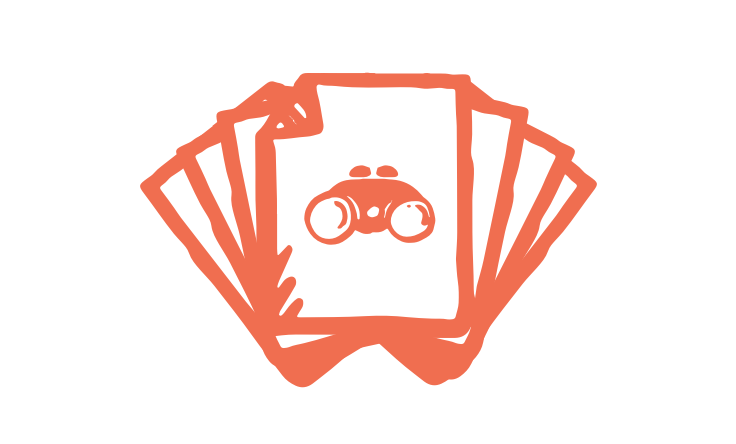
My family and I went to the beach recently. We have a 10-year-old son, and he invited one of his friends to come with us.
It might sound odd, but a favorite beach activity for my son and I is to dig giant holes in the sand. He likes to jump over them and slide down the sides, and I enjoy getting a little exercise. If you haven’t done it before it’s weirdly satisfying and even a bit therapeutic.
On this trip, we had to sell the idea of “digging a giant hole” to his buddy. Having never experienced it before, he was curious but didn’t totally see the potential.
Shortly after we started digging, the boys were playing around with our big beach blanket. They decided to lay it over the hole to create a “trap”.
That’s when the lightbulb went off for his friend.
“What if we dig the hole out more and use the sheet as a roof? Then we can have a clubhouse inside.”
That was it. Everything sped up.
The hole got way bigger, the sheet was placed over top, and the boys got inside. They brought in snacks and towels, and even installed a “sink” (aka. a bucket with some water in it).
All of a sudden, they had a private little nook in the middle of a crowded beach.
They were stoked.
Now, imagine if at the start of the trip instead of selling his friend on “a giant hole” we had sold him on “a private beach clubhouse”.
How much easier would it have been to get him to understand why we were digging a hole? How much more excited would he have been to get started? And how much more likely would he be to remember all of it?
That’s the power of a strong brand positioning strategy.
It’s taking what your business has to offer and presenting it in the optimal way to the right person. It helps your target customers understand what you do, why it’s uniquely valuable, and how to remember it.
How Customers Think About You

(Breakfast or Art? Photo by Kimberly Nanney on Unsplash)
Every time a customer looks at your brand and your business, they want to figure out the position you fill in their life. In other words, they decide how your offering relates to a need they have and whether it solves that need in some unique way.
To do this, they:
- Fit you into a category they understand
- Look for the value you provide relative to that category
- Decide whether to engage or move on
This process is shaped by your customers knowledge and past experiences, so it’s automatic and almost instant.
The key then is to present them with the right information for the first two steps, to increase the odds of the third step going in your favor.
Using the beach example above, my son’s friend first heard:
- Category: Something to do at the beach
- Value: A hole to jump in
- Decision: “I guess so…” (hard to refuse in that scenario)
But it transformed into:
- Category: A fun, unique experience
- Value: Private, custom clubhouse
- Decision: “That’s awesome, let’s do it!”
When your brand provides the right content and messaging, it can be the difference between a customer saying “I guess?” and “let’s do it!”.
Death or Delight?

Another great positioning example again comes from my family but on the business side. It’s a card game my wife, a hospice social worker, co-created called The Death Deck.
My wife and her business partner designed this game as a tool to help people talk about the sometimes scary topic of death. They want people to feel more comfortable with those discussions so they can be more prepared when they have to face the realities of it.
On the surface it would be easy to fall into:
- Category: End of life planning
- Value: Express my thoughts on death so people know my beliefs and wishes
- Decision: “Hmm, maybe in another 10 years…”
Their goal though is to get the game and the conversations it generates to as many people as possible. They want to transform the topic of death and dying from a scary chore, to a fun and meaningful way to connect with people you care about.
To help with that, we talked a lot about how to position the product and their brand as something people would see in an entertaining light.
The essence of the brand position we developed is:
- Category: Party Game
- Value: Laugh and share stories and ideas with the people closest to you while talking about a taboo topic
- Decision: “Cool, let’s play!”
They’ve sold hundreds of decks so far and people have shared lots of great experiences playing the game. Friends, families, and couples who’ve known each other for years discover ideas and beliefs they’ve never talked about before.
Using the right positioning has helped accomplish their goal to get people talking.
Work On Your Own Brand Positioning
To work on the positioning for your own business, you need to answer some questions about your customers, the competition, and your offering.
- Customers: Who are the customers that will most benefit from your offering? Which categories are top of mind for them when looking for similar solutions? Which category do you actually want to be in?
- Competition: What are the other competitors in that category? What are their biggest strengths and weaknesses?
- Offering: How does your offering compare to others in that category? Which aspects of your offering are unique and best separate you from the pack?
Of course your answers are only part of the equation. You need to talk to your customers and get their feedback to validate if your assumptions are accurate. Do customers engage with you for the reasons you think?
Again, the end goal is fairly straightforward. You want your target customers to:
- Slot you in the right category
- Spot your unique points of value
If you can figure those things out, it will simplify all of your marketing. Customers will have an easier time engaging with your business. They’ll be more likely to remember you going forward. And they’ll be able to share that position with their friends.
Free Worksheets To Help
If you want some free resources to help craft your Brand Positioning, sign up below to get 7 worksheets that walk you through core exercises for your Customers, Competition, Offering, and much more!


